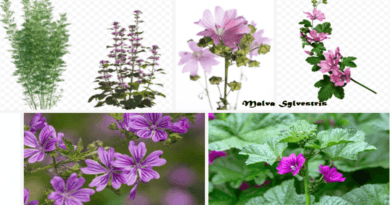Coriander or Cilantro
Coriandrum sativum, commonly known as coriander or cilantro, thrives worldwide for its culinary and medicinal properties. Originating from Southern Europe, North Africa, and Southwestern Asia, this plant holds a special place in kitchens and traditional medicine. Its unique blend of flavors and health benefits has cemented its status as a beloved herb across cultures and continents.
The Origins and History of Coriandrum Sativum
Coriander boasts a rich history, dating back to ancient civilizations. Archaeological evidence suggests that coriander seeds were found in ancient Egyptian tombs, symbolizing its value even in the afterlife. The Romans, known for their lavish feasts, frequently incorporated coriander into their cuisine to enhance flavors and aid digestion. In Indian Ayurveda, coriander has been revered for its healing properties, often used in herbal remedies for digestive issues and overall well-being. Over centuries, this herb has traversed continents, finding its place in diverse culinary traditions and folk medicine practices. Today, coriander remains an essential ingredient in global cuisines, from the bold and spicy curries of India to the refreshing salsas of Mexico.
Nutritional Profile of Coriander

Coriander not only enhances flavor but also delivers essential nutrients. Both its leaves (cilantro) and seeds offer an impressive array of vitamins and minerals, including vitamin C, vitamin K, folate, potassium, and manganese. These nutrients play vital roles in maintaining immune function, supporting bone health, and regulating blood pressure. Additionally, coriander seeds are packed with antioxidants, which combat free radicals and help reduce oxidative stress in the body. This nutritional powerhouse ensures that every sprinkle or garnish contributes to overall health.
Health Benefits of Coriander

- Digestive Health
Coriander seeds support digestion by stimulating digestive enzymes and juices. As a result, they aid in smoother digestion, reduce bloating, and prevent indigestion. Drinking coriander seed water is a popular home remedy in many cultures for easing digestive discomfort. - Anti-Inflammatory Properties
This herb contains bioactive compounds such as linalool and terpinene, known for their potent anti-inflammatory effects. Regular consumption of coriander can help alleviate symptoms linked to arthritis, muscle pain, and other inflammatory conditions. - Blood Sugar Regulation
Studies reveal that coriander seeds can lower blood sugar levels by enhancing insulin activity. Consequently, they are beneficial for managing diabetes and preventing blood sugar spikes after meals. - Heart Health
The antioxidants and essential oils in coriander contribute to reducing bad cholesterol (LDL) levels while improving good cholesterol (HDL) levels. These effects help maintain cardiovascular health and reduce the risk of heart diseases.
Culinary Uses of Coriander

Coriander plays a versatile role in global cuisines, contributing both bold flavors and aromatic freshness to dishes. Its seeds and leaves offer distinct tastes that complement a variety of recipes.
- In Indian Cuisine: Chefs use ground coriander seeds in spice blends like garam masala and curry powders, adding a warm, citrusy undertone to dishes.
- In Mexican Dishes: Fresh cilantro leaves are essential in salsas, guacamole, and tacos, providing a zesty and vibrant flavor.
- In Middle Eastern Recipes: Ground coriander seeds are frequently used in meat rubs, marinades, and stews, enhancing both texture and taste.
Beyond these, coriander is also used in soups, salads, sauces, and pickles, making it one of the most adaptable herbs in culinary traditions.
Growing Coriander at Home

Growing coriander at home is simple and rewarding, even for beginners. This herb thrives in well-drained soil with moderate sunlight. It’s best to sow seeds directly into the soil, as coriander dislikes being transplanted. Regular watering, combined with occasional trimming, encourages lush, healthy growth and prevents premature bolting. Whether grown in a garden bed or a kitchen windowsill pot, fresh coriander leaves and seeds are always within arm’s reach for your culinary experiments.
Sustainability and Environmental Impact
Coriander stands out as an environmentally friendly crop due to its minimal water requirements and adaptability to different climates. Its ability to thrive with little maintenance makes it a sustainable choice for both small-scale home gardeners and commercial farmers. Additionally, every part of the plant—from seeds to leaves to roots—serves a purpose, resulting in little to no waste. This sustainability factor aligns coriander with eco-conscious farming practices.
Precautions and Allergies
Although coriander is generally safe for consumption, some individuals may experience allergic reactions. Common symptoms include skin irritation, mild gastrointestinal discomfort, or, in rare cases, respiratory issues. It’s essential to test for allergies before consuming coriander in large quantities or using it in concentrated forms like essential oils.
Final Thoughts
Coriandrum sativum offers far more than just culinary appeal. Its historical significance, impressive health benefits, and versatility in cooking make it an indispensable part of global diets and wellness practices. Whether sprinkled fresh over a salad, blended into a spice mix, or brewed into a medicinal tea, coriander brings its unique touch to every dish and remedy. As both a flavor enhancer and a health booster, this humble herb truly earns its place in kitchens and herbal medicine cabinets worldwide.
References
Smith, J. (2021). The Herb Handbook: Culinary and Medicinal Uses.
Greenfield, L. (2020). Natural Remedies with Herbs and Spices.
Research Journal of Herbal Medicine (2022). Health Benefits of Coriandrum Sativum.




